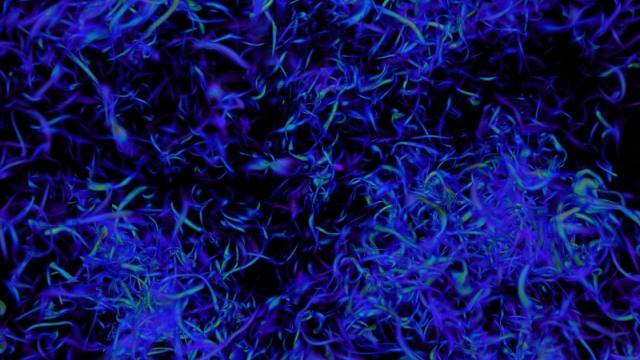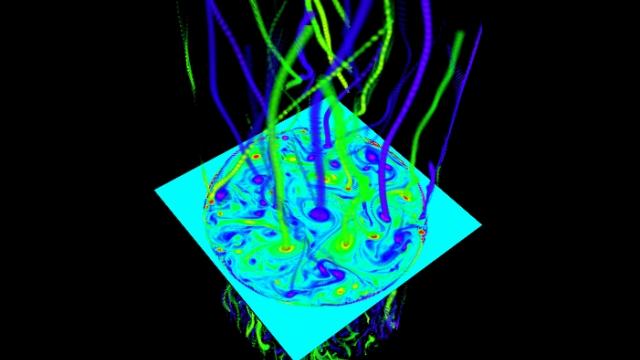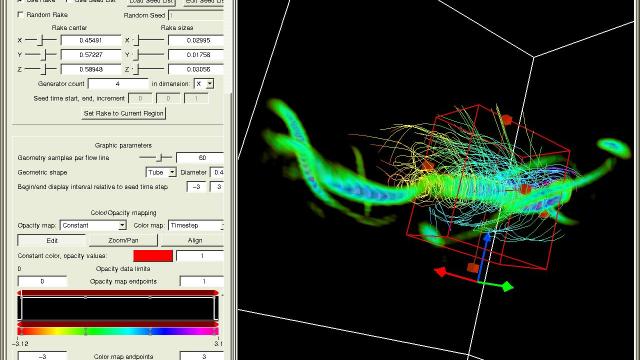Airport Area Large-Eddy Simulation
The animation displays the influence of airport-building induced turbulent crosswind on an aircraft during final approach. The animation data were derived using the parallelized large-eddy simulation model PALM (http://palm.muk.uni-hannover.de/), simulating a neutrally stratified flow over an artificial building, with a mean flow from the south and a free stream wind of approximately 20m/s. Visualized is the variation of the local mean crosswind, with positiv values in red and negative values in blue. The building is 250m x 25m x 40m (length x width x height) and displayed in white. The animation spans over 9 minutes with parts accelerated by a time-lapse factor of 5, and was created with the visualization software VAPOR (https://www.vapor.ucar.edu/). The total PALM model domain had a size of 4km x 2km x 2km in streamwise, spanwise and vertical direction. The displayed domain extends over 500m x 1000m x 200m. During the last 20 seconds of the simulation, the crosswind variation encoutered by an aircraft (white) during its final approach is tracked. The encountered crosswind variation is dispalyed on its flightpath as well as in a temporal history plot in the lower left corner of the screen. The aircraft has a groundspeed of 70m/s. Its flightepath is 450m downstream from the building.
The airport building generates strong turbulence with resulting crosswind variations of up to 10m/s. The aircraft enouters these strong crosswind variations within seconds. Behind the building the encountered crosswind drops from more than 15m/s down to almost 0m/s.
The animation can be divided into two major parts. The pre-flight part of the animation starts with an aerial view onto the entire airport area and shows several perspectives of the scene with slow camera moves. The flight part shows the final approach of the aircraft.
















